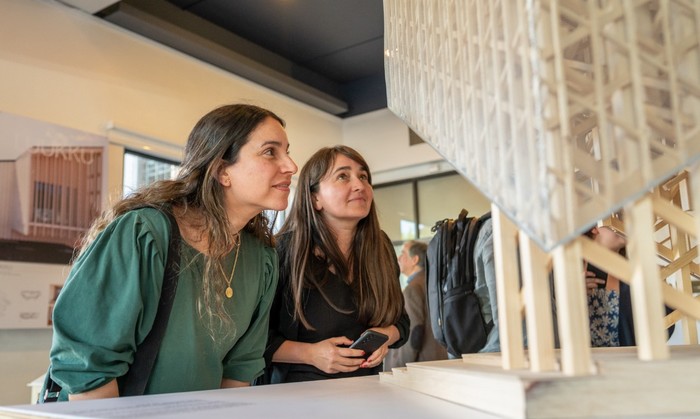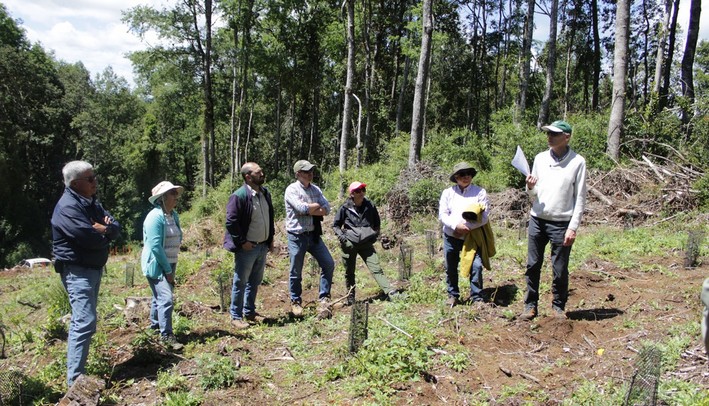Wood Stronger and Lighter Than Steel: The Material That Could Revolutionize Global Construction
Steel has been one of the pillars of modern construction, but its environmental impact is terrifying: producing a single ton emits nearly two tons of CO₂. Its use is also expensive and complex. Now, a material invented in 2018 at the University of Maryland will offer a radically superior alternative this very year. Its name is Superwood, a product of eight years of research with tensile strength 50% greater than steel and a strength-to-weight ratio ten times higher. Not only is it lighter and stronger, but it also sequesters carbon. InventWood, the company commercializing it, has just announced that mass production will begin in a couple of months.
"We've spent years perfecting our molecular reconfiguration process to maintain the extraordinary properties demonstrated in the lab while making the process commercially viable," Alex Lau—co-founder and CEO of InventWood—told me via email.
The company was founded in 2016 by Dr. Liangbing Hu at the University of Maryland after he developed transparent wood the previous year and recognized the potential of one of civilization's fundamental materials to create revolutionary new supermaterials. "What began as pioneering academic work evolved through several iterations," says Lau. After inventing transparent wood came the predecessor to Superwood in 2017, documented in a 2018 Nature paper that revealed a method to transform ordinary wood into a substance rivaling titanium alloys.
During this time, Dr. Hu focused on further refining the technology and reducing manufacturing costs. In 2021, Lau recognized the technology had matured enough for large-scale commercialization. "At that point, I helped assemble a full team to kickstart the manufacturing process," he explains. "Since 2021, we've intensely focused on creating a scalable process and ensuring the quality standards needed to bring Superwood to market."
How It's Made
The process has two steps. First, lignin—a polymer that stiffens wood and gives it its brown color—is partially dissolved using food-grade chemicals. As noted by Orlando J. Rojas, a professor at Finland's Aalto University, when Dr. Hu published the discovery in 2018, the key lies in removing just the right amount of lignin to maximize hydrogen bonding between cellulose fibers without compromising structural integrity. Next, the wood is compressed at 65.5°C, collapsing its cellular structure into an extremely dense matrix. The result is a material five times thinner than the original but 12 times stronger and 10 times harder.
This molecular reconfiguration eliminates wood's inherent weaknesses. Natural wood is porous and prone to rot, but Superwood's densely packed cellulose fibers create a barrier against moisture, termites, and fungi. Its fire resistance rating is the highest available, and it doesn't use chemical flame retardants. Its density is so high that it starves flames of oxygen. Lab tests also demonstrated its ballistic resistance: a projectile pierced untreated wood but only penetrated halfway through a Superwood block of the same thickness. Unlike steel or carbon fiber, Superwood doesn't require energy-intensive smelting or synthetic resins.
Initially, making a single Superwood board took weeks, but InventWood's team optimized the process to just hours, enabling bulk production. 140 patents later, they're about to begin manufacturing.
Industrial Production
Lau tells me the company's first plant in Frederick, Maryland, will produce one million square feet of Superwood annually starting this summer, initially focusing on high-end commercial and residential interior finishes. A second phase in fall 2025 will introduce exterior-grade panels for cladding and roofing. He envisions structural beams and columns within a few years, pending certification. Their plan is to build "a larger plant expanding to over 2.7 million square feet, enabling use in infrastructure and large-scale construction," Lau adds.
According to Lau, builders can cut, drill, and fasten Superwood with standard woodworking tools, though its density may require adjusted techniques. "No specialized tools are needed, easing adoption," he says. The material's stability minimizes warping, and polymer coatings allow outdoor use without sacrificing aesthetics.
Its compressed fibers deepen natural grain patterns, producing finishes resembling tropical hardwoods.
Lau declined to disclose pricing details, only stating that Superwood's initial price will compete with premium tropical hardwoods and hybrid woods (composites of wood and materials like steel or concrete). This means, kilo for kilo, it will be far more expensive than steel—over ten times so: €27.5–55 per kilo of Superwood versus €2.2–4.4 per kilo of steel.
Its corrosion resistance must also be considered, along with the fact that an entire building can be constructed with Superwood, eliminating the need for other materials. Then there's the economic and environmental cost of chemical flame retardants: they're simply unnecessary. Plus, since wood comes from the planet's most efficient carbon sequestration system, the materialabsorbs CO₂ from the atmosphere.Additionally, Superwood is made with wood from sustainable forestry operations, Lau tells me.
Clearly, Superwood's long-term value proposition narrows the gap with steel in relative and absolute terms. The company expects prices to improve as production scales up.
Superwood's applications also extendbeyond construction.Early research proposed uses in vehicles, aircraft, and furniture, leveraging its moldability and cost savings compared to carbon fiber. For now, InventWood is focused on construction, where steel and concrete leave a massive carbon footprint, pollution, and economic toll."We want to reach the building's foundations,"says Lau. He believes Superwood can transform the construction industry. We'll see when the first batches launch this summer and companies start using them.
Source:El Confidencial

















